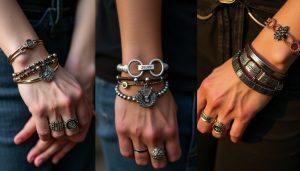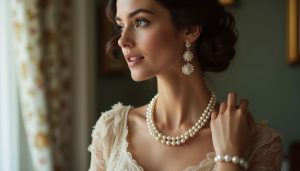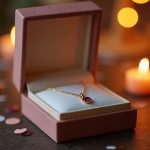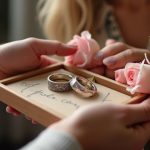The journey of wedding jewelry is a fascinating narrative intertwined with history, culture, and the evolving standards of beauty and love. As one of the most significant symbols of commitment, wedding rings and jewelry reflect societal values and personal sentiments. Join us as we explore how wedding jewelry has transformed throughout the ages, paving the way for unique expressions of love.
The Historical Roots of Wedding Jewelry
Wedding jewelry dates back to ancient civilizations. The earliest recorded instance can be traced back to the Egyptians around 3,000 BC when rings were exchanged to symbolize eternal love. Made from braided reeds or leather, these rudimentary rings indicated ownership and commitment, depicting a bond that the partners shared.
The Romans, too, contributed significantly to the tradition of wedding jewelry. They popularized the use of iron rings, symbolizing strength and permanence. By the wedding ceremony, these iron bands served as both a token of marriage and a practical display of status. Interestingly, the practice of placing the ring on the fourth finger of the left hand originated from the belief that this finger contained a vein that connected directly to the heart, aptly named the ‘Vena Amoris’ or the vein of love.

The Impact of Religion and Culture
As cultures and religions developed, so did their specific traditions surrounding wedding jewelry. For instance, in Christianity, the wedding ring symbolizes the bond between husband and wife, often blessed during the ceremony. Meanwhile, Jewish traditions incorporate the use of a ‘ring’ known as a ‘Ketubah’ to signify marriage, which in some interpretations includes soul and spiritual dimensions.
Different cultures infused their individuality into wedding jewelry. A prominent example is the Indian subcontinent, where elaborate gold jewelry sets adorned with gemstones are often worn by brides, symbolizing prosperity and good fortune. Such jewelry frequently becomes heirlooms, passed down through generations, encapsulating familial history and love.
The Victorian Era and the Birth of Sentimental Jewelry
The 19th century saw the rise of the Victorian Era, a significant period in wedding jewelry’s evolution. With the advent of romanticism, jewelry began to feature sentimental designs, reflecting personal stories and emotions. Engraved rings with hidden messages or motifs became popular, creating unique tokens of affection between couples.
Additionally, gemstones gained prominence during this period. The introduction of the concept of “birthstones” further personalized wedding jewelry, allowing couples to choose stones that represented their birth month or held personal significance. Notably, Queen Victoria’s choice of a diamond engagement ring from Prince Albert set trends that resonate today.
The Edwardian and Art Deco Eras: Luxury and Innovation
The Edwardian era (1901-1910) embraced elegance and sophistication in wedding jewelry. This period saw the use of platinum as a popular choice for engagement rings, which allowed for intricate, delicate designs that displayed brilliance and luxury. Artisans began incorporating filigree work, giving jewelry a light, airy quality.
As the Roaring Twenties arrived, the Art Deco movement significantly influenced wedding jewelry. Bold geometric shapes, colorful gemstones, and unique settings reflected the changing ideals of fashion and femininity. Couples began seeking less traditional options; distinctive designs allowed for personal expression. The Art Deco style’s emphasis on symmetry and craftsmanship introduced a fusion of elegance and extravagance in wedding jewelry.
The Mid-20th Century: Post-War Changes and the Rise of Diamonds
The aftermath of World War II marked a shift in wedding jewelry preferences. The 1940s and 1950s saw diamonds being popularized as the quintessential stone for engagement rings, largely thanks to the advertising campaign by De Beers, which declared, “A diamond is forever.” This campaign not only solidified the belief in diamond rings as a standard for love and commitment but also affected global demand for diamonds.
Further Reading:
While luxury jewelry became more accessible as middle-class partnerships grew during this era, many couples opted for simpler, yet elegant, designs. White gold and platinum settings became popular, matching the rising demand for minimalistic yet timeless aesthetics. Moreover, wedding bands transitioned to simpler gold bands that represented an easy match to the ornate engagement rings.
The 21st Century: Personalization and Ethical Considerations
Entering the 21st century, wedding jewelry exhibited a growing trend toward personalization. Couples embraced the sentimentality of uniquely designed rings, moving away from traditional styles in favor of customized creations that reflect their love story. Jewelry designers began offering options that combine various materials, cuts, and personalization, allowing couples to put a unique stamp on their wedding pieces.
Contemporary wedding jewelry also reflects an expanded awareness of ethical sourcing. Consumers today are increasingly mindful of the environmental and social implications of mining, leading to a rise in conflict-free diamonds and lab-created gems. Couples prioritize ethical considerations, showcasing their values through their wedding jewelry choices.
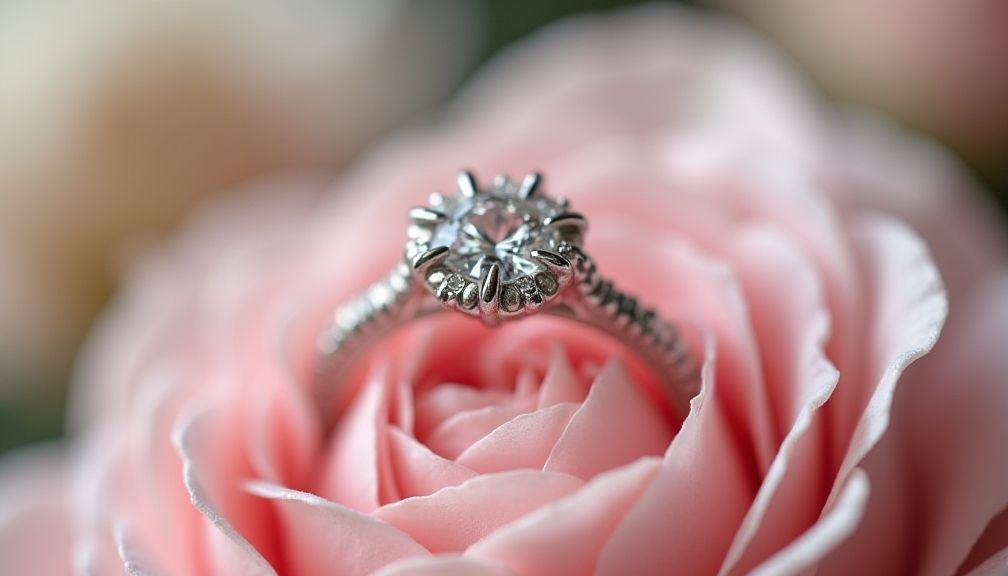
Current Trends in Wedding Jewelry: What’s New?
As wedding jewelry continues to evolve, several modern trends are emerging. One significant trend is the resurgence of vintage and heirloom jewelry. Many couples are choosing to repurpose family diamonds or using antique settings, infusing their commitment with meaningful history.
Additionally, alternative gemstones, such as sapphires, emeralds, and morganites, have grown in popularity. These unique stones allow for individuality while stepping outside the conventional norms associated with diamonds. The desire for atypical engagement rings enhances couples’ expressions of personal style.
Conclusion: The Ever-Evolving Symbol of Love
From ancient civilizations to modern days, wedding jewelry has evolved remarkably while continuously representing love, commitment, and individuality. The historical evolution unveils insights into cultural values, aesthetic beliefs, and personal expressions. As time progresses, marriage customs may shift, but one thing remains constant: wedding jewelry will forever hold significance as a symbol of devotion and connection.
As we embrace the future, let us celebrate the journey of wedding jewelry and its profound meanings in our relationships. Whether through a traditional ring, a personalized creation, or the revival of family pieces, wedding jewelry will continue to be a cherished part of love stories around the globe.

